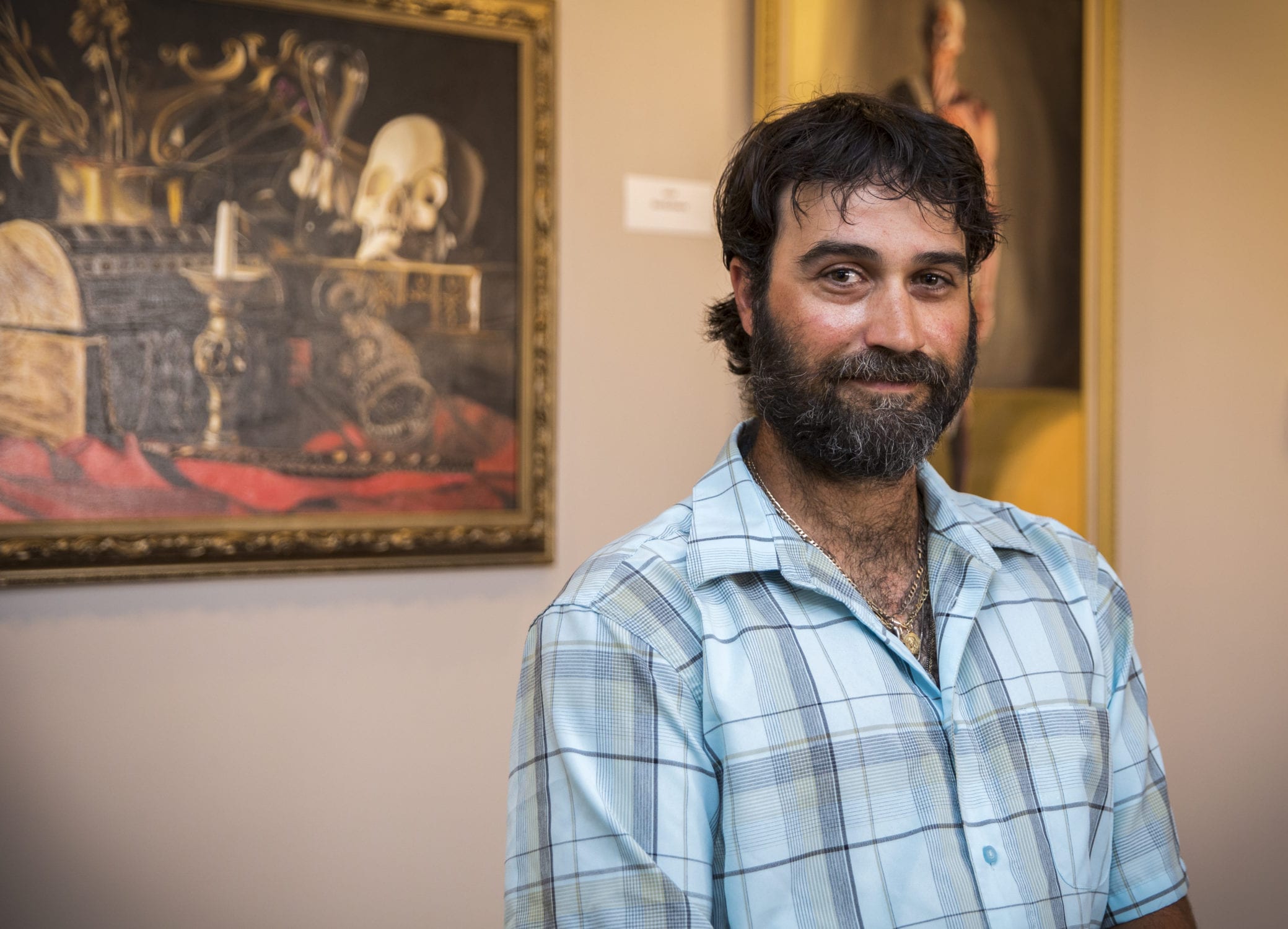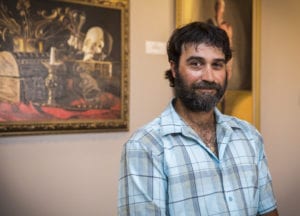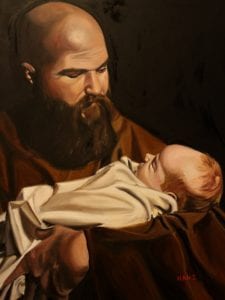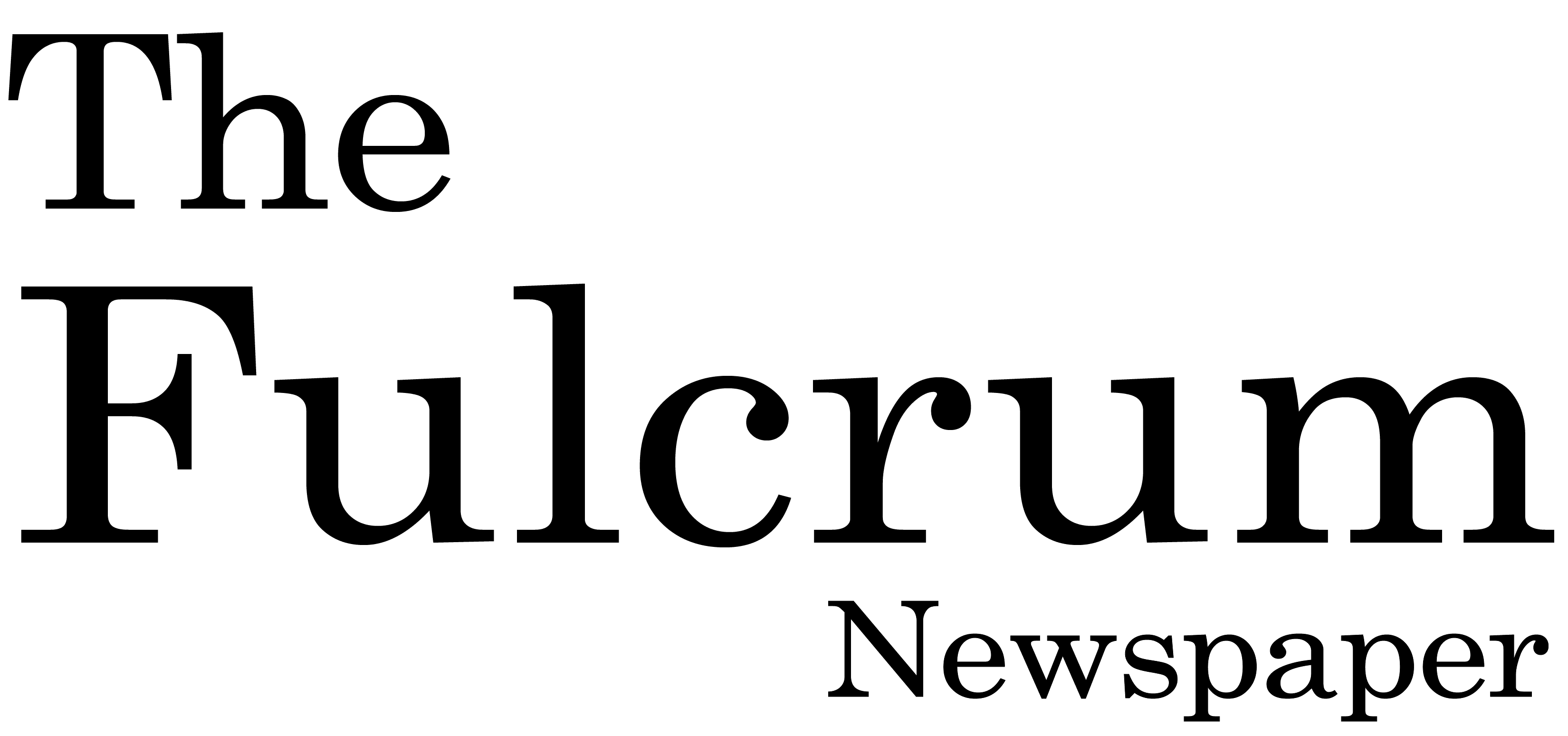A pensive St. Anthony cradles a baby, while a stern David holds the head of the giant Goliath. A monk, deeply shadowed in his robes, delicately wraps his hands around a skull, the ultimate memento mori as St. Lucia, a trickle of blood on her face, serves up her own eyes on a silver platter.
With their religious themes, deep shadows and stunning realism, these dramatic oil paintings could come directly from the 17th century, perhaps hung on the walls of a museum. While they were inspired by Baroque masters such as Caravaggio, Rembrandt and Velázquez, they were actually created in the past five years by SUNY Broome alumnus Anthony Hanakovic.
With the title “In the Shadow of the Masters,” Hanakovic’s work is on exhibit through Sept. 29 in the Gallery @ SUNY Broome, located on the first floor of the library.
“Maybe I’m in the shadow of the masters because I’m not as good as them, but I’m trying to be as good as them,” he said, explaining the exhibit’s title. “They painted with such high chiaroscuro and shading.”
Dramatic style
Hanakovic earned his Associate’s degree in Liberal Arts, with an emphasis on art, in 2000. He then headed to SUNY Buffalo State for art education and then to Binghamton University for a master’s degree in social sciences. In addition to his studio work, he teaches elementary art at Harpursville’s W.A.
Olmstead Elementary School.
While his oil paintings perhaps attract the most notice, he also makes prints, which are also on display in the exhibit.
As a painter, he concentrates on using tools, techniques and themes from the Baroque period, which was marked by chiaroscuro – the high contrast between light and shadow.
“It was the height of technical excellence in painting. It was when painting became very realistic and very dramatic,” he said.
The religious themes are both a testament to Hanakovic’s own Catholic faith, as well as a reflection of the Baroque period, when the old masters were typically commissioned by the church for their work. Like the masters, he hides symbols in the paintings – and is thrilled when viewers notice them and mark their meaning.
His themes depend on a number of practical factors. He makes his own period props and finds models who fit the traditional interpretation of figures; St. Peter, for example, was often depicted with a long, white beard, while St. James was often painted as a young man with curly hair.
While he enjoys the more dramatic themes, he noted that drama needn’t be overt; the St. Anthony painting, for example, depicts a calm, quiet and reverent scene. (St. Anthony was frequently depicted in paintings as holding the infant Jesus.)
“Paintings focus on something profound happening, like the conversion of Paul when he falls off the horse,” Hanakovic explained. “It draws my attention and other people’s attention more to see someone going through something or having something happen to them, rather than just looking at the viewer.”
SUNY Broome roots
SUNY Broome – or more specifically, its professors — played an important role Hanakovic’s development as an artist. Professors that made a significant impact on his work include painters Michael Tanzer and Daniel Mosner, and Patricia Evans in design. Richard Baron prompted his interest in art history, which later inspired Hanakovic’s research into the methods of the old masters.
“I remember going to shows that involved my teachers at SUNY Broome and I would see their work and think, ‘Oh my God, they’re so good,’” he said.
Click here to learn about Liberal Arts programs at SUNY Broome.
Click here to learn about our Visual Communication Arts degree.
Sometimes the toughest professors can be the best teachers. Take Professor Nancy Ryan, who led Hanakovic to realize during his student years that he didn’t have an adequate grasp of composition. “My composition is something people comment on,” he reflected. “My composition would not have been great if Nancy Ryan didn’t come out and tell me it’s bad.”
Mosner, who taught Hanakovic the Flemish technique, perhaps contributed the most to his current painting style. This classical oil painting technique requires a three-layer underpainting, followed by layers of color – and is a crucial component to the realism seen in Baroque-era paintings. In his striving for realism, Hanakovic had reached an impasse until he perfected the method.
He constantly works to hone his technique. Some experiments include extra layers of paint on the canvas to smooth out grooves and add to the realism, or painting on boards and panels, which the masters often did. (A downside: Paint on panels chips much more easily, making it practical only for pieces that are intended to stay in one place.)
When he began his art career, Hanakovic’s dream was to have a single public show. He has far surpassed that and has exhibited his work in both New York and Pennsylvania during the past five years, in addition to participating in juried shows.
While in the community, he sees paintings by Tanzer and Armondo Dellasanta, who have both since passed. “I want my artwork to outlast me,” he said – a sentiment that many of the old masters shared.
What also lies in the shadow of the masters are the failed paintings, the experiments that don’t produce the desired results – at least not without years of practice. Hanakovic, like any good artist, has plenty of those. And he has a well-rehearsed answer when you ask him how long it took him to master the masters’ style – a question he faces frequently.
“It’s a combination of 39 years of trying stuff and failing, and then trying some more stuff,” he said.







